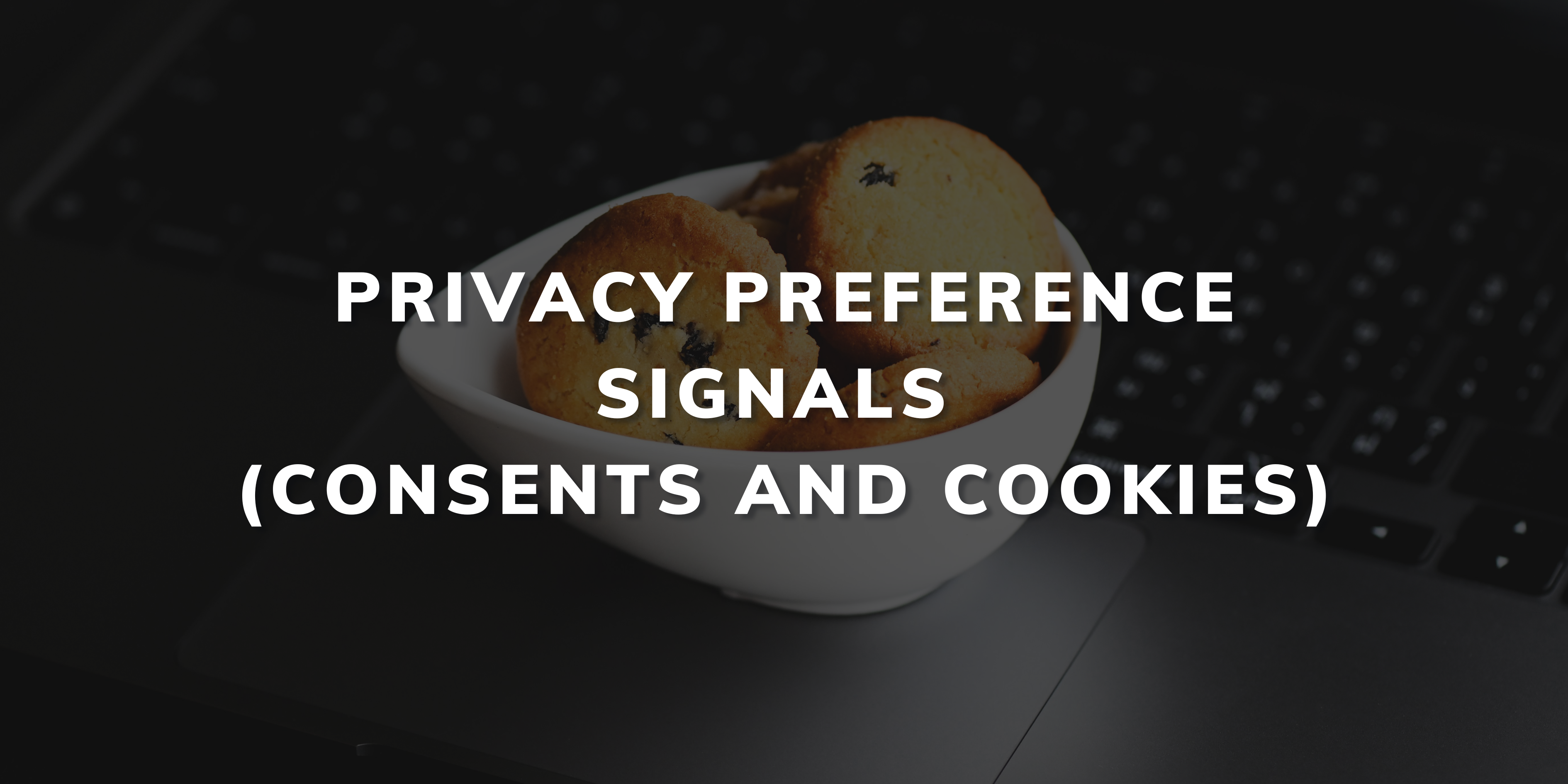
Privacy Preference Signals (Consents and Cookies)
In this ever-growing online and data age, where personal data is as valuable as currency, managing privacy preferences has become a paramount concern for users. The methods through which individuals express these preferences are diverse, yet they all serve the same purpose: to control how personal information is handled, shared, and utilised across the web. This post dives into the nuances of Privacy Preference Signals, emphasising their significance and the complexities that arise from their implementation.
Key Summary
- Privacy Preference Signals offer users a way to control their personal data amidst often non-transparent data practices.
- Preferences are set via website-specific frameworks like TCF and universal browser settings such as Global Privacy Control (GPC).
- Other methods include cookie consent banners, ad personalisation opt-outs, and detailed account privacy settings.
- There’s a gap between users’ privacy intentions and their actual consent actions, with many still allowing tracking.
- The complexity of privacy preferences highlights the need for clearer understanding and guidance for users.
The Essence of Privacy Preference Signals
Privacy Preference Signals are mechanisms through which users can convey their consent (or lack thereof) regarding the collection, processing, and sharing of their personal data. These signals are crucial in the data ecosystem, offering a semblance of control in an otherwise opaque environment where data transactions occur seamlessly and often without explicit user consent.
Privacy preferences are primarily expressed in two ways:
- Individually on Websites
This is exemplified by the Transparency & Consent Framework (TCF), which is widely adopted by ad-tech vendors and websites. TCF provides a standardised approach to requesting and managing user consent for data collection and processing. - Globally Through Browser Settings
Mechanisms like Do Not Track (DNT) and Global Privacy Control (GPC) allow users to set universal privacy preferences across all websites they visit. GPC, in particular, has garnered over 40 million users, highlighting its popularity and the growing concern over privacy.
Additional Methods for Managing Privacy
Beyond these primary methods, users have several other avenues for managing their privacy preferences:
- Cookie Consent Banners
These are perhaps the most visible form of privacy preference management, popping up on websites asking users to accept or reject cookies and similar tracking technologies. - Ad Personalisation Settings (Do Not Sell)
These settings, provided by online advertising networks or platforms, enable users to opt-out of targeted advertising, reflecting their desire not to have their data used for personalisation purposes. - Account-Based Privacy Settings
Many platforms offer settings within user accounts for individuals to specify their privacy and data-sharing preferences in a more granular manner.
Observations and Trends
Despite the availability of these tools, the reception and usage of privacy signals are mixed:
- A significant 27% of users block the TCF dialog, with the rate jumping to 50% and 73% among DNT and GPC users, respectively, indicating a stronger privacy inclination in these groups.
- GPC users, in particular, exhibit a high level of privacy concern, being twice as likely to withhold consent.
- Yet, 73% of GPC users still consent to tracking when faced with TCF consent dialogs, revealing a gap between privacy intentions and actions.
Conclusion
Navigating the world of privacy preferences is tricky, with a mix of choices and behaviours that don’t always match up. Options like TCF, GPC, and cookie consent banners are out there for people to set their privacy levels, but how well these work can be pretty complicated.
There’s a whole range of signals and actions showing that people really care about their privacy, but finding the right way to protect it isn’t straightforward. People are engaging in different ways, and there’s a lot of confusion around what the best steps are.
To really get a handle on this, it’s not just about having these tools to express privacy preferences. There needs to be a bigger push to help everyone understand what their choices mean for their privacy.
